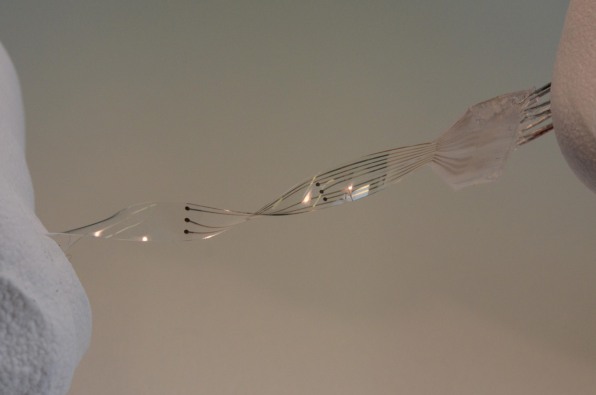Developments in design of new responsive polymers along with structure–property evaluation, fabrication of materials, and modeling of materials are vital for the applications of polymer gels. Firstly, bio-responsive hydrogels and elastomers that show a response to enzymes, proteins, and other combinations of stimuli are important for biotechnological applications of shape-memory including modulated drug-release studies, biosensors, diagnostics, tissue regeneration/wound healing, cellencapsulation membranes and hybrid organ development. Major considerations for the usage of these materials include biocompatibility, bio-degradability, mechanical strength, response time under physiological conditions, and good correlation between in vitro and in vivo studies.14,106,108,109 Secondly, stimuli-responsive polymer gels are good candidates for the design of microfluidic channels to fabricate elements for separation, catalysis, sensing, surface modifications, and dosing microvolumes of liquids. Lastly, an exciting and important direction for stimuli-responsive materials is the design of new polymer gels that produce nanoscale fractal patterns for renewable energy applications (from link)
Owing to their unique ability to undergo large, reversible volumetric changes in response to small amounts of external chemical and physical stimuli, responsive hydrogels are promising materials for a broad range of applications, from sensors to actuators. (from link )
Although the gel is completely composed of synthetic polymer, it shows autonomous motion as if it is alive. To cause an anisotropic contraction with curvature changes, a gel strip with a gradient structure was prepared. By coupling with a ratchet mechanism, the gel walks with repeated bending and stretching motions by itself like a looper at a speed of 170 lm min–1. This “self-walking” gel actuator could serve as a new framework for a biomimetic robot (from link)
also: http://200.145.112.249/webcast/files/FPDUDA_Lectures.pdf
http://wwwcourses.sens.buffalo.edu/ce435/Osada98.pdf
Scientists develop artificial skin that can feel rain and the touch of a hand
also: controling of senses / motion
EPFL researcher's neural implant can make paralyzed rats walk again. Soft and stretchable, it is the first of its kind that can be implanted directly on the spinal chord, without damaging it. Described in Science, this new generation device called e-Dura combines electrical and chemical stimulation
interfaces between electronic and neuronal tissues - NERVE-CELL thread their way through tiny semiconductor tubes, researchers find, forming a crisscrossed network





Comments
Post a Comment